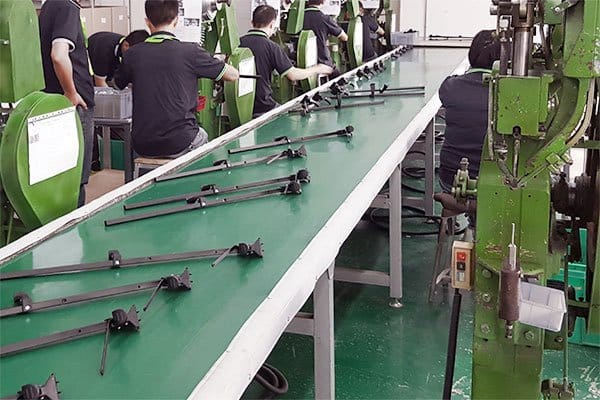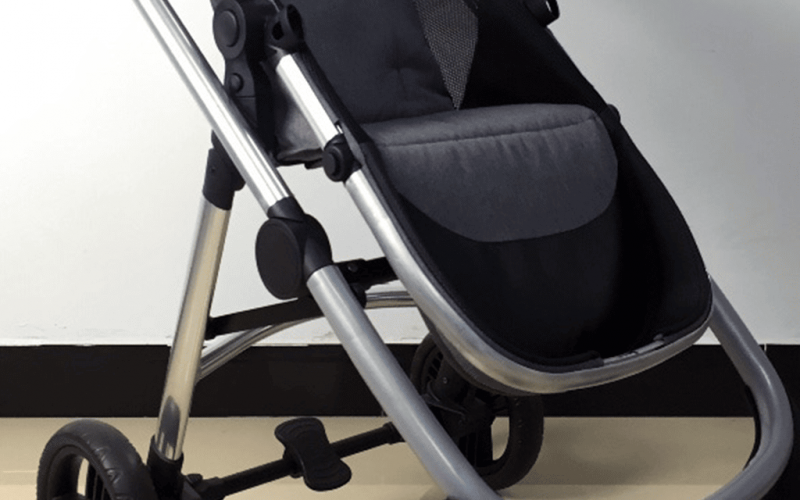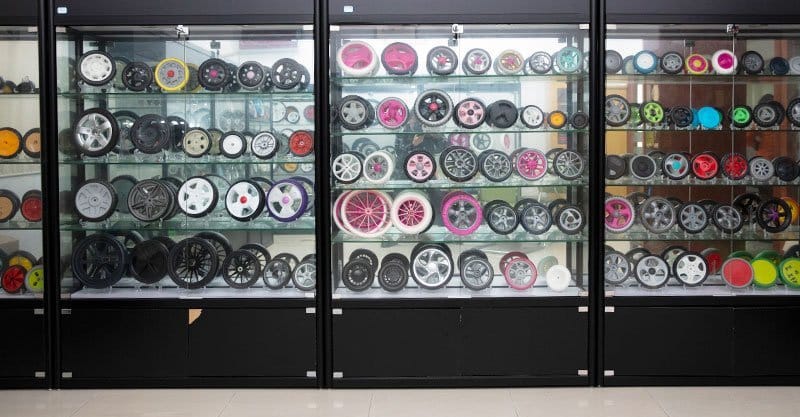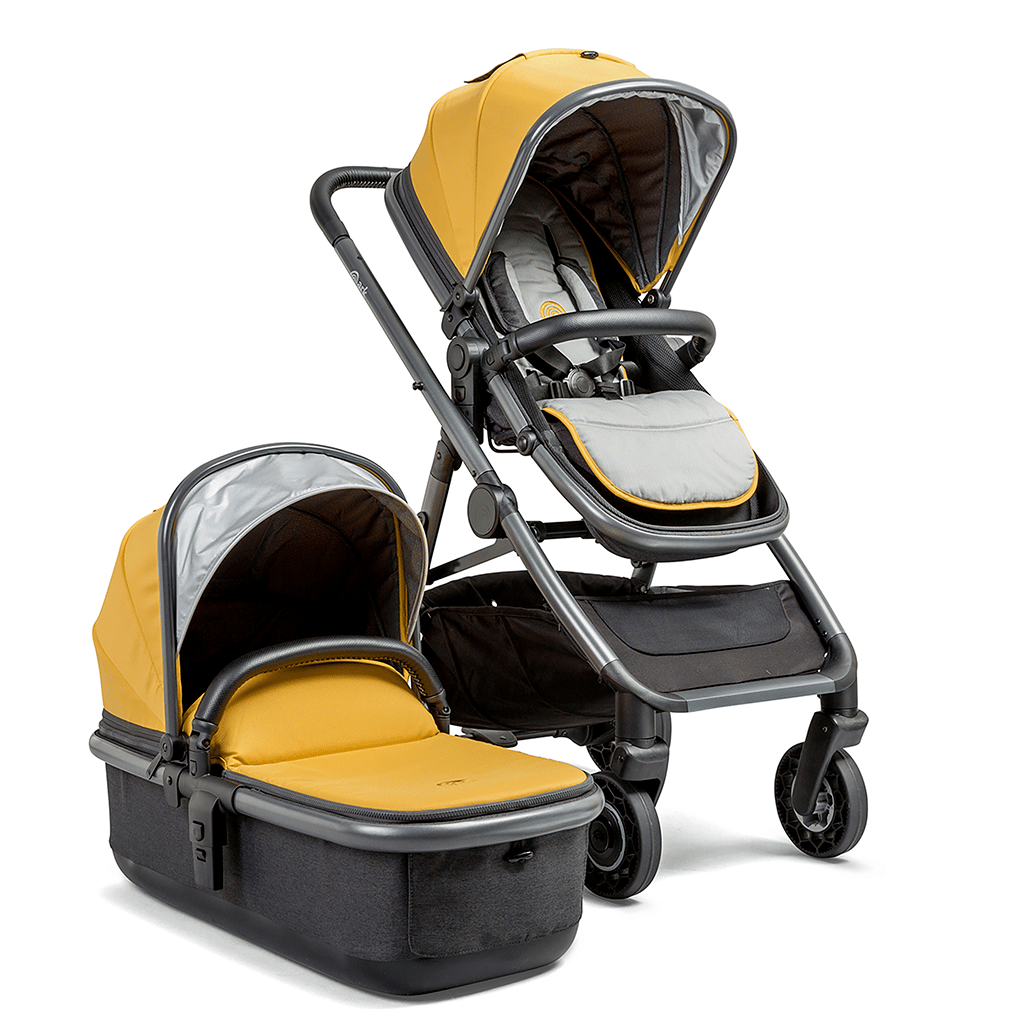Using Donor Products to Create Your Product
The concept of using a donor (or mule) product is highly appealing. You source a product that has a similar design to your concept. With a few simple changes, your unique features can be added or a few parts swapped out and all of a sudden you have a fantastic new product to sell. Loads of development time and cost saved as well as significantly reduced tooling cost. What could be easier? Well, it’s not always as straight forward as it looks! Read on to find out why…
We used a donor pushchair to create our child travel system that launched with John Lewis. The appeal of reduced tooling cost was huge. Four years later I wish we’d just bitten the bullet and developed our pushchair from scratch. It would have been a better product and we would have made more sales and spent LESS money.

The donor product method was most famously used by Tesla to create their 1st generation Roadster vehicle, using the Lotus Elise as a donor vehicle. But Elon Musk announced in 2018 that he wished he had built from scratch as the final Tesla only shared 7 % of its parts with the Elise. Imagine the number of months lost in negotiation and redesign to work with the Elise chassis, to only end up with 7% of the donor vehicle in the final design!
Here’s the quote from Elon Musk when interviewed by Joe Rogan*:
“We used a highly modified [Lotus] Elise chassis [for the Tesla Roadster], the body was all completely different,” admitted Tesla CEO. “By the way, it was a super dumb strategy that we actually did.”
The main challenge with using a donor product is that puts extra constraints on the design that often result in compromises. These compromises often become a step too far and then you have to develop elements from scratch anyway. New product development is a series of compromises anyway, between what the target market is willing to pay, unit costs and what is technically achievable (to name just a few of the constraints!). When you constrain the product development process still further, by forcing a solution that uses a donor product, you often end up with something in the end that isn’t fit for purpose.
Starting from scratch gives the designers many more options and ensures that fewer compromises need to be made. They can often design a much better product as a result and one that needs fewer workarounds to deal with the integration challenges related to donor products. Using a donor product also involves significant time and effort in negotiations and communication with the manufacturer of that original product. You don’t want to design something that relies on using a donor product, only to find that the modification that you want to make can’t be achieved due to the production processes used by the supplier. To avoid this, significant communication with the manufacturer is necessary whereas designing from scratch, your design team has a wider manufacturing base to utilise and is more aware of potential manufacturing solutions rather than being tied to the processes, materials and equipment of the current supplier.

For example, with the pushchair, we designed a new front end that was a single bent tube design. This was going to be stronger with less failure points and we spent considerable time designing and prototyping this only to then discover that the manufacturer didn’t have the equipment to accurately bend the tube ensuring that both front wheels were level. The whole design had to be scrapped and we had to start again. If we had been designing from scratch then we could have found a different manufacturing who did have the skillset and equipment to make this, but the manufacturer of the original product wouldn’t entertain a new supplier for this part and so this wasn’t an option.
What can be done? You might get lucky and find a highly flexible donor product manufacturer who you can work with. If so then I suggest a clear, written contract is created as soon as possible, not because it is necessarily enforceable, but to help ensure that both parties know what is expected. This will mean you have some protection, at least, should the manufacturer change their mind about what they are prepared to do for you and in what timescale. Otherwise, you are adding the risks of the manufacturer pulling out, taking your IP, contesting your IP or in some other way devaluing the development time that you’re putting in.
Often, you are better off working with component suppliers rather than donor products. For example, you might want to source some great wheel manufacturers rather than tooling up your own design of wheel for your first product. This would be a sensible MVP approach if there is nothing specifically unique about the wheels for your product.

With our pushchair we found that we lost important orders because the donor parts were not the same level of aesthetic design as the new parts. Customers generally didn’t notice but distributors and retailers who were used to seeing different brand pushchairs next to each other could see that the quality of design of some of the parts was inconsistent and therefore said that they weren’t prepared to order. For them a ground-up, unique design was far more appealing than something that had some Eastern design components.
As another example, we spent a lot of time designing around existing tube profiles of the factory’s own design pushchair. This is because they had mouldings we needed that fitted a round profile and to replace them would have cost tens of thousands of pounds of new tooling. We wanted to design the frame to be more attractive, lighter and slimmer but we needed to keep the round tube profile. As such the aesthetic was compromised and also the design of the frame mouldings we were replacing took a lot longer than if we could have specified our own tube profile. Sometimes designing in your requirements to fit with an existing components costs more time and money than designing from scratch.
Designing parts to go into a donor product is particularly challenging when you need the overall aesthetic to be consistent. Often, you have to accept the donor products style and materials and so it must be selected carefully. Not only are you looking for a product that is functionally similar but it also needs to be aesthetically similar to your vision for your product. Trying to restyle a donor product is often impossible to do, particularly if you are aiming for a premium product.
Costing becomes a challenge. You can’t ask the donor product manufacturer to price the product before the design is done. But you can’t design it without committing to the donor manufacturer. Once complete the manufacturer holds all the cards and can basically quote what they want for the unit price. Afterall you can’t go anywhere else as you are tied into their tooling and their design by that stage. As such, competitive quoting isn’t possible and there is little room for negotiation.
Our manufacturer more than doubled the price from their donor pushchair to our design. We negotiated hard but still paid probably 20% more than we should have done. Savings in tooling by using their parts quickly vanished!
There are some positives. For example, we were able to save tooling cost and give up less equity in the start-up in the early stages when the company valuation was low. Sometimes we need parts urgently and the factory often has these in stock as they are using the same components on their range which is a useful added benefit. Also, if they have quality issues or breakages then these issues can be shared and the design improved to the benefit of both parties. But, these advantages are more than outweighed by the issues explained above and by the fact that you end up tied to that manufacturer. I can’t now go and make my pushchair somewhere else as I would have to buy all the tooling for the shared components and re-design these parts as otherwise, I would be breaching the factory’s design rights. In summary, think very carefully before using a donor product for anything other than a one-off prototype to prove functionality!
